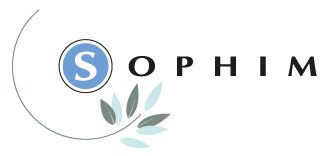We are committed to offering you natural-origin cosmetic ingredients, some of which are produced through upcycling and green chemistry, ensuring respect for both the environment and human health. Our ingredients comply with the natural index defined by ISO 16128, an international standard that guarantees a high level of transparency across our entire catalog.
Natural indices in the ISO 16128 standard
ISO 16128 provides a framework for evaluating the naturality of ingredients and cosmetic products. This harmonized methodology ensures transparency in line with our corporate policy and international presence. The standard is divided into two parts: ISO 16128-1:2016 and ISO 16128-2:2017.
Definition of ingredients based on their origin
The ISO 16128-1:2016 standard focuses on defining cosmetic ingredients according to their origin:
- Natural ingredients: derived from natural sources (plants, minerals, microorganisms, etc.), they undergo minimal physical or chemical processing that preserves their original nature (e.g., extraction, drying, grinding, filtration).
- Derived natural ingredients: sourced from natural raw materials but subjected to chemical transformations within the limits set by the standard for formulation or stability purposes.
- Organic ingredients: obtained from an agricultural supply chain certified organic according to a recognized standard.
- Mineral ingredients: extracted from mineral resources such as clays, salts, or metals.
- Non-natural ingredients: synthetic ingredients produced through chemical reactions, without being derived from natural materials (e.g., silicones, synthetic polymers).
For example, Insapolive is a cosmetic ingredient derived from the unsaponifiable fraction of olive oil, naturally rich in squalene. The extraction processes, including distillation, saponification, and purification, preserve the product’s original nature. According to ISO 16128-1:2016, Insapolive is classified as a natural ingredient.
Calculation of the natural index
The ISO 16128-2:2017 standard defines the calculation methods used to determine natural indices:
- Natural index: represents the proportion of natural ingredients in a cosmetic product.
- Natural origin index: includes both natural ingredients and those derived from natural sources.
- Organic index: measures the proportion of organic ingredients in a cosmetic product.
- Organic origin index: also accounts for ingredients derived from organic sources but subjected to accepted chemical transformations.
These indices are calculated based on ingredient categories defined in ISO 16128-1:2016, providing an accurate quantification of natural and organic ingredient content.
PhytOlive®Fine is a cosmetic ingredient obtained by grinding and sieving olive pits. This exfoliating and soothing powder is rich in tocopherol (vitamin E), oleic acid, and linoleic acid. Composed entirely of natural ingredients, PhytOlive®Fine achieves a natural index of 1.
Végéline Bio 65 consists of castor seed oil, hydrogenated castor oil, and carnauba wax. Transformation processes such as hydrogenation comply with ISO 16128-1:2016. This natural alternative to petroleum jelly has a natural origin index of 0.999 and an organic origin index of 0.84.
Natural index and organic cosmetics
An organic cosmetic product must meet the requirements of certification standards such as COSMOS Organic or Ecocert, which ensure a specific percentage of ingredients from organic farming while prohibiting certain synthetic components. However, some natural-origin ingredients cannot be certified organic as they do not come from agricultural processes—this applies, for example, to water and minerals.
For the COSMOS Organic label:
- At least 95% of plant-based ingredients must be from organic farming.
- A minimum of 20% of the final product must consist of organic ingredients (10% for rinse-off products).
The natural index defined by ISO 16128 provides a method to calculate the proportion of organic ingredients. However, an organic-certified ingredient or product may have an organic origin index below 1 due to:
- The presence of water and minerals, which are considered natural but cannot be certified organic.
- The presence of transformed natural-origin ingredients, allowed by organic standards but with an organic origin index lower than 1 due to processing.
Explore our guide: Differences between organic and natural cosmetics
Cosmetic ingredients with a high natural index
The vast majority of our catalog features a high natural index according to ISO 16128-1, with a natural origin index ranging from 0.971 to 1. Only our MC30 and MC300 emollients, which are mineral-based, fall into the non-natural ingredient category and have a lower natural origin index.
Discover our range of high-natural-index cosmetic ingredients, designed with respect for both the environment and human health:
- Emollients: squalane, squalene, and natural alternatives to silicones;
- Texture agents: plant-based cosmetic butters, natural cosmetic waxes, and natural alternatives to petroleum jelly;
- Organic cosmetic vegetable oils.
A large part of our references is certified COSMOS NATURAL, COSMOS ORGANIC, NATRUE, or HALAL.
Looking for a partner to support you in developing your next cosmetic product lines? Contact our team at (+33) 4 92 33 17 17 or send us a message online!






